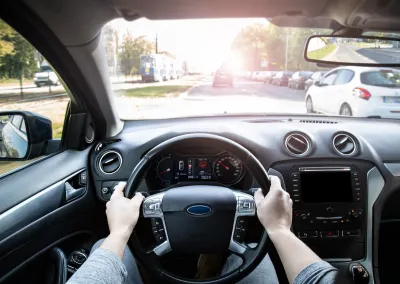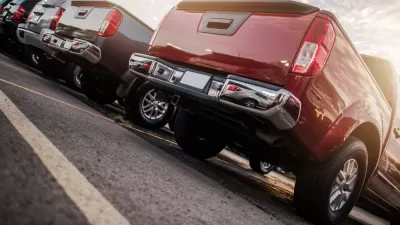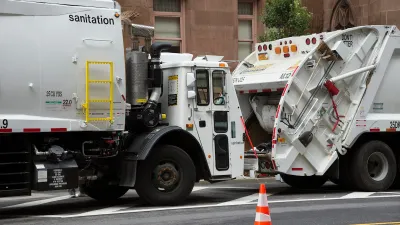Blind spots created by thicker pillars built to withstand rollover crashes are creating dangerous conditions for people outside vehicles.

We know cars are getting bigger — but they’re also becoming much harder to see out of, writes David Zipper in Bloomberg CityLab.
Zipper points to one major culprit: the A-pillar, the part of a car’s frame that blocks a driver’s vision out their windshield. “For passengers, thicker A-pillars provide protection in the event of a rollover, preventing the roof from caving in. But their girth can also expand driver blind spots, exacerbating danger for the pedestrians and cyclists who have been dying at record-setting levels on US roadways,” Zipper explains.
Because carmakers focus on the safety of those inside vehicles and A-pillars help prevent injury in rollovers, they are getting bigger at the expense of pedestrians. However, studies show that rollover crashes are on the decline thanks to electronic stability control, making stronger roofs less important.
Meanwhile, “If the safety effects of stronger A-pillars is neutral to positive for vehicle occupants, the converse is true for those walking, biking or inside other cars.” Blind zones in most car models are expanding, and federal regulators do not seem poised to step in anytime soon. According to Matt Reed, an engineering professor at the University of Michigan, “the complexity of calculating the size and danger of A-pillar blind zones presents a formidable regulatory obstacle” because of the cost-benefit analysis required for federal rulemaking.
FULL STORY: Why Did Cars Get So Hard to See Out Of?

Maui's Vacation Rental Debate Turns Ugly
Verbal attacks, misinformation campaigns and fistfights plague a high-stakes debate to convert thousands of vacation rentals into long-term housing.

Planetizen Federal Action Tracker
A weekly monitor of how Trump’s orders and actions are impacting planners and planning in America.

In Urban Planning, AI Prompting Could be the New Design Thinking
Creativity has long been key to great urban design. What if we see AI as our new creative partner?

King County Supportive Housing Program Offers Hope for Unhoused Residents
The county is taking a ‘Housing First’ approach that prioritizes getting people into housing, then offering wraparound supportive services.

Researchers Use AI to Get Clearer Picture of US Housing
Analysts are using artificial intelligence to supercharge their research by allowing them to comb through data faster. Though these AI tools can be error prone, they save time and housing researchers are optimistic about the future.

Making Shared Micromobility More Inclusive
Cities and shared mobility system operators can do more to include people with disabilities in planning and operations, per a new report.
Urban Design for Planners 1: Software Tools
This six-course series explores essential urban design concepts using open source software and equips planners with the tools they need to participate fully in the urban design process.
Planning for Universal Design
Learn the tools for implementing Universal Design in planning regulations.
planning NEXT
Appalachian Highlands Housing Partners
Mpact (founded as Rail~Volution)
City of Camden Redevelopment Agency
City of Astoria
City of Portland
City of Laramie





























